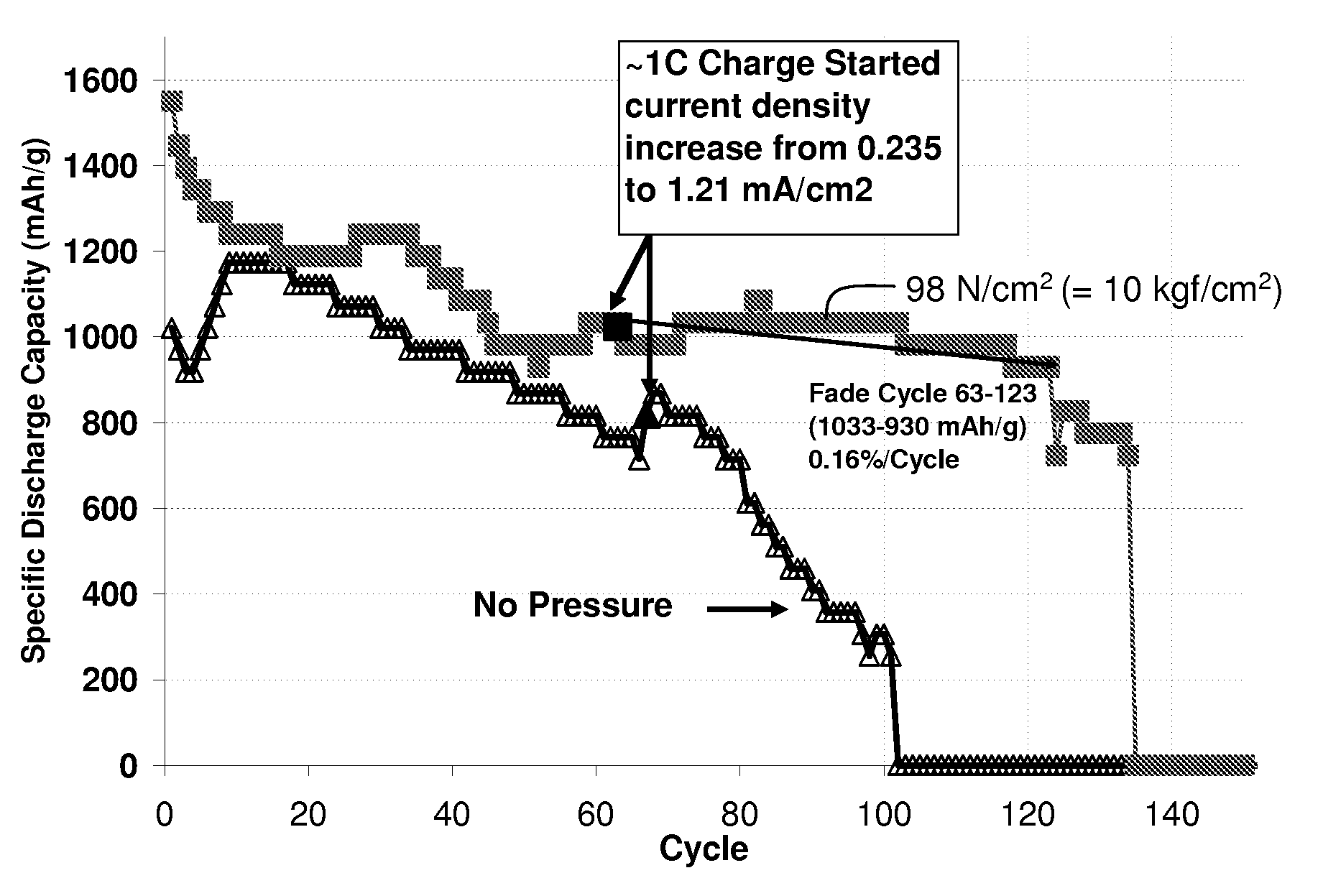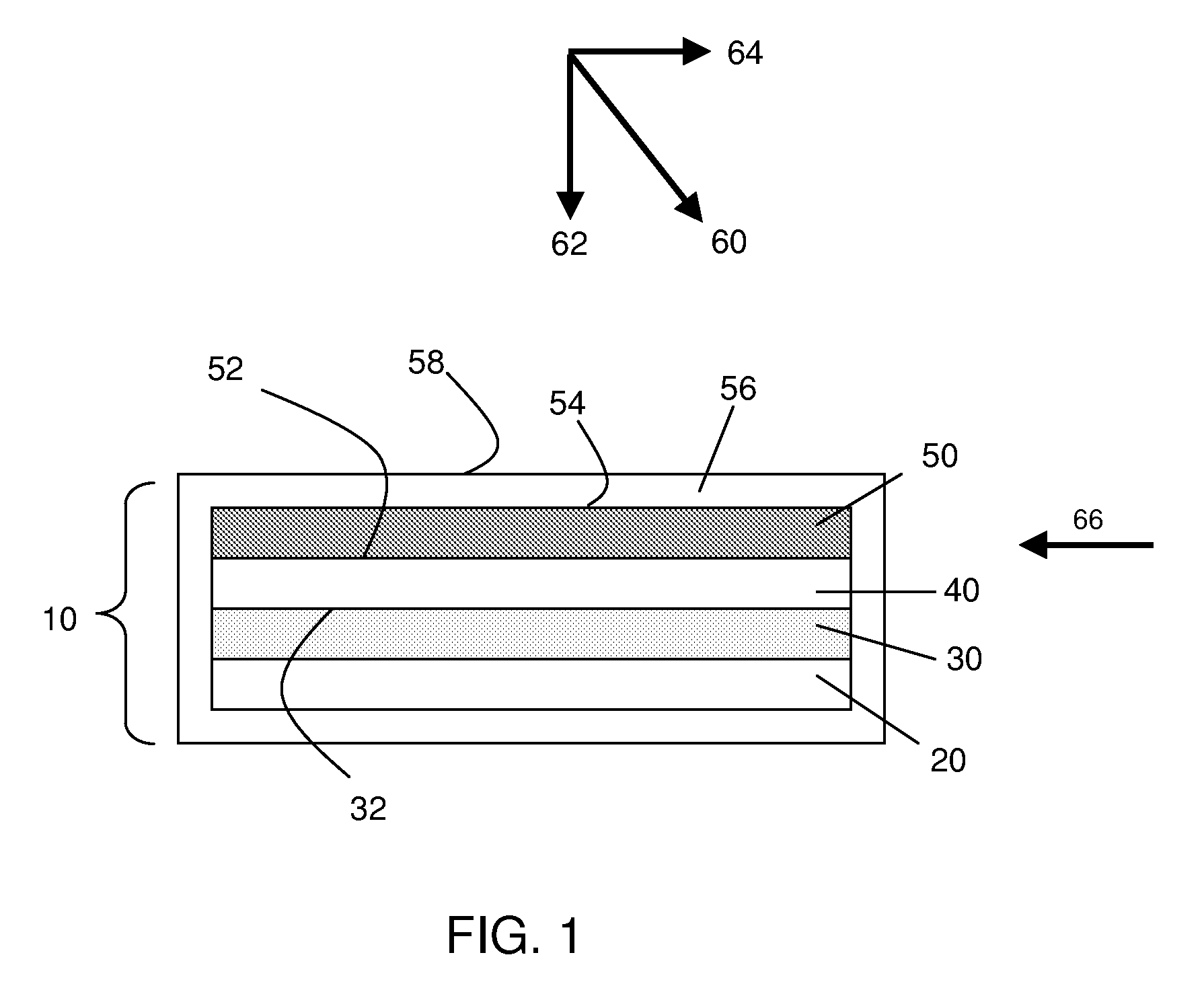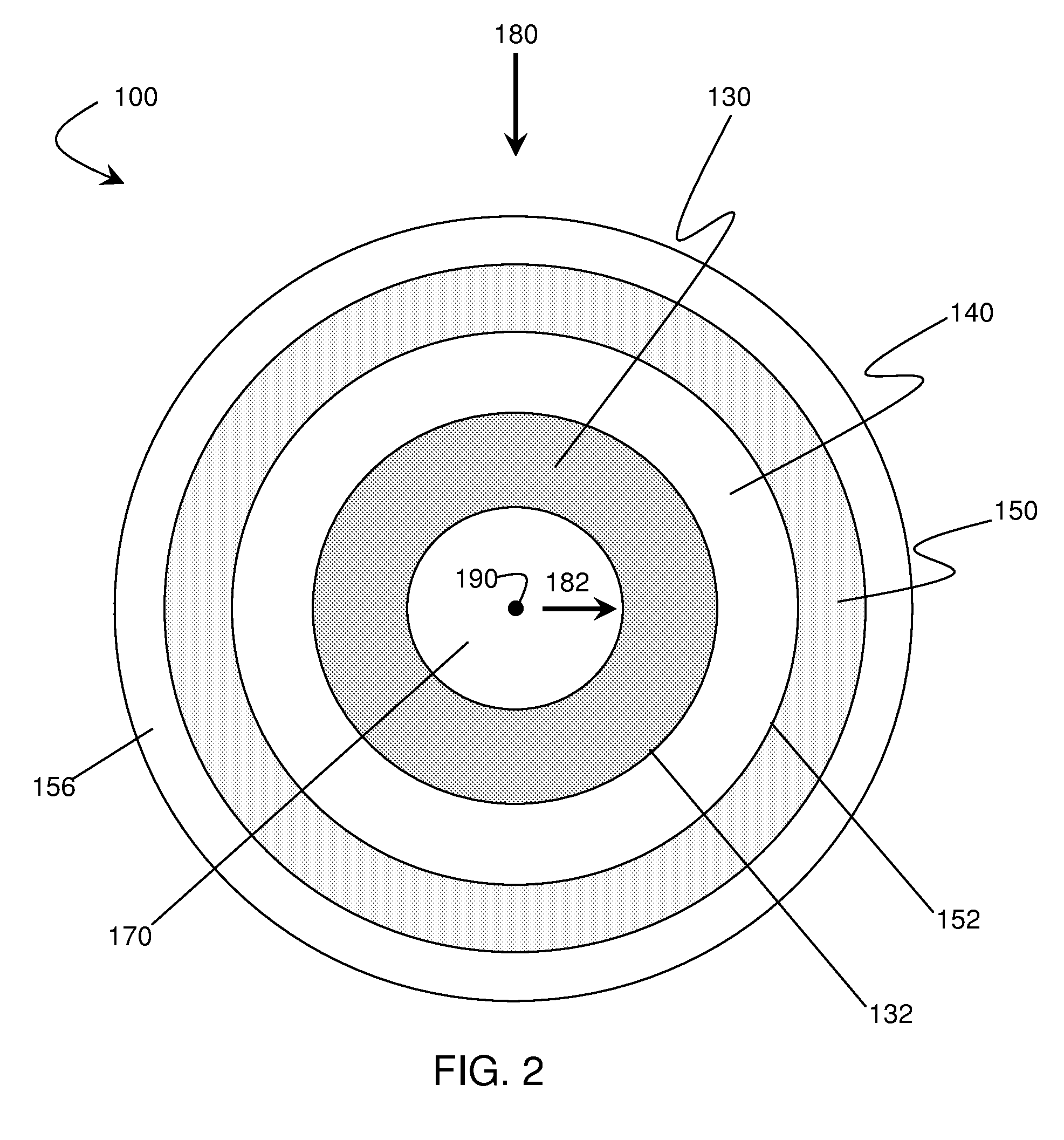Cathode for lithium battery
a lithium battery and cathode technology, applied in the field of electrochemical cells, can solve the problems of low utilization of active species in cells, low charge/discharge efficiency, and high loss of performance with repeated cycling
- Summary
- Abstract
- Description
- Claims
- Application Information
AI Technical Summary
Benefits of technology
Problems solved by technology
Method used
Image
Examples
example 1
[0118]This example describes the fabrication and testing of cathodes, according to one set of embodiments. Slurries were made by dissolving 47.5% sulfur, 47.5% XE-2 carbon, and 5% PVOH binder in solvents. The slurries were coated on aluminum foil primed with a conductive carbon layer and dried to make the cathodes. The active material loading in the cathodes was about 1.41 mg / cm2. Pouch cells were made with the above-mentioned cathodes, separators, and lithium anodes. The active areas of the cathodes in the cells were about 16.57 cm2. The electrolytes contained primarily dioxalane and di-methoxy ethane, as well as limited amounts of lithium bis(trifluoromethyl sulfonyl) imide, LiNO3, Guanidine nitrate and Pyridine nitrate. The discharge and charge currents used for cycling were 0.4 mA / cm2 and 0.236 mA / cm2, respectively. The amount of electrolyte used in the cells was 0.2 mL. One set of the cells undergoing the above cycling tests was kept under a pressure of 98 Newtons per square ce...
example 2
[0119]This example describes the fabrication and testing of another set of cathodes, according to one set of embodiments. Slurries were made by dissolving 47.5% sulfur, 47.5% XE-2 carbon, and 5% PVOH binder in solvents. The slurries were coated on aluminum foil primed with a conductive carbon layer and dried to make the cathode. The active material loading in the cathodes was about 1.13 mg / cm2. Pouch cells were made with the above-mentioned cathodes, separators and lithium anodes. The active areas of the cathodes were about 16.57 cm2. The electrolytes contained primarily dioxalane and di-methoxy ethane, with limited amounts of lithium bis(trifluoromethyl sulfonyl) imide, LiNO3, Guanidine nitrate and Pyridine nitrate. The discharge and charge currents used for cycling were 0.4 mA / cm2 and 0.236 mA / cm2, respectively. The amount of electrolyte used in the cells was 0.2 mL. One set of the cells undergoing the above cycling tests was kept under a pressure of 98 Newtons per square centimet...
example 3
[0120]Another set of cathodes was fabricated and tested as follows. Slurries were made by dissolving 47.5% sulfur, 47.5% XE-2 carbon, and 5% PVOH binder in solvents. The slurries were coated on aluminum foil primed with a conductive carbon layer and dried to make the cathodes. The active material loading in the cathodes was 1.13 mg / cm2. Pouch cells were made with the above-mentioned cathodes, separators and lithium anodes. The active area of the cathodes was about 16.57 cm2. The electrolytes contained primarily dioxalane and di-methoxy ethane, with limited amounts of lithium bis(trifluoromethyl sulfonyl) imide, LiNO3, Guanidine nitrate, and Pyridine nitrate. The amount of electrolyte used in the cells was 0.15 mL. One of the two sets of the cells undergoing the cycling tests was kept under a pressure of 98 Newtons per square centimeter by compressing the cells between two parallel metallic plates. The other set was cycled without any compression. The discharge and charge currents us...
PUM
| Property | Measurement | Unit |
|---|---|---|
| porosity | aaaaa | aaaaa |
| current density | aaaaa | aaaaa |
| pressure | aaaaa | aaaaa |
Abstract
Description
Claims
Application Information
 Login to View More
Login to View More - R&D
- Intellectual Property
- Life Sciences
- Materials
- Tech Scout
- Unparalleled Data Quality
- Higher Quality Content
- 60% Fewer Hallucinations
Browse by: Latest US Patents, China's latest patents, Technical Efficacy Thesaurus, Application Domain, Technology Topic, Popular Technical Reports.
© 2025 PatSnap. All rights reserved.Legal|Privacy policy|Modern Slavery Act Transparency Statement|Sitemap|About US| Contact US: help@patsnap.com



